150 Best Sphinx Riddles Unveiled Discover the Secrets Behind These Ancient Brain Teasers
Unlock the enigmatic world of Sphinx riddles, where ancient wisdom meets modern curiosity. These thought-provoking puzzles have captivated minds for centuries, challenging us to think creatively and critically.
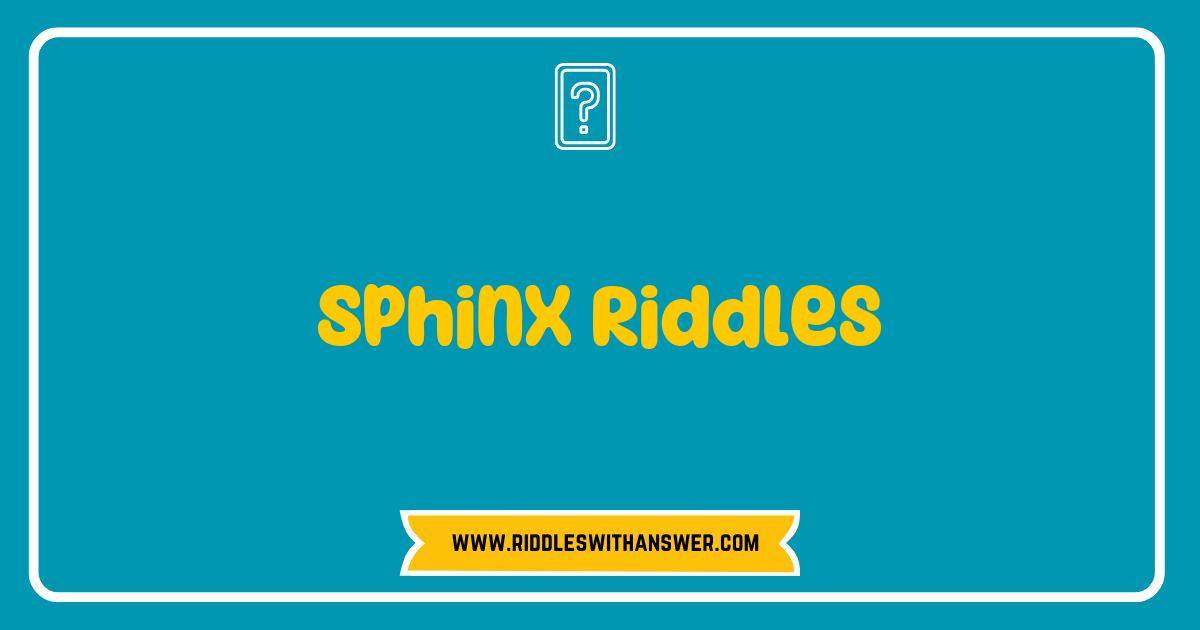
Delving into their origins reveals a rich tapestry of culture and intellect, inviting both young and old to engage in mental gymnastics. Join us as we unravel the mysteries behind these timeless conundrums and discover why they continue to intrigue puzzle enthusiasts today.
Best Sphinx Riddles Unveiled Discover the Secrets Behind These Ancient Brain Teasers
Riddle: I can speak without a mouth and hear without ears. What am I?
Answer: An echo.
Riddle: I travel around the world but never leave my spot. What am I?
Answer: A stamp.
Riddle: The more you take, the more you leave behind. What am I?
Answer: Footsteps.
Riddle: I am not alive, yet I can grow; I don’t have lungs, but I need air. What am I?
Answer: Fire.
Riddle: I can be cracked, made, told, and played. What am I?
Answer: A joke.
Riddle: I have keys but open no locks. I have space but no room. What am I?
Answer: A keyboard.
Riddle: I fly without wings, I cry without eyes. Whenever I go, darkness flies. What am I?
Answer: A cloud.
Riddle: You see me once in June, twice in November, but not at all in May. What am I?
Answer: The letter “e.”
Riddle: I am full of holes but still hold water. What am I?
Answer: A sponge.
Riddle: I have a heart that doesn’t beat. I can run but am not alive. What am I?
Answer: An artichoke.
Riddle: I can be long or short, I can be grown or bought, I can be painted or left bare, but I’ll always have a pair. What am I?
Answer: Nails.
Riddle: I am taken from a mine, and shut up in a wooden case, from which I am never released. What am I?
Answer: Pencil lead.
Riddle: I go in hard, come out soft, and am never the same. What am I?
Answer: Chewing gum.
Riddle: I have branches, but no fruit, trunk, or leaves. What am I?
Answer: A bank.
Riddle: The more you have of me, the less you see. What am I?
Answer: Darkness.
See Also – Explore 150 Enchanting Fairy Riddles with Answers for All Ages
The Origin and Significance of Sphinx Riddles in Ancient Culture
Sphinx riddles, rooted in ancient cultures like Egyptian and Greek, symbolize the quest for knowledge and wisdom. These enigmatic puzzles, famously posed by the mythical Sphinx, challenged travelers to unveil truths about life and existence. Their significance lies in fostering critical thinking, revealing the importance of intellect in navigating life’s…
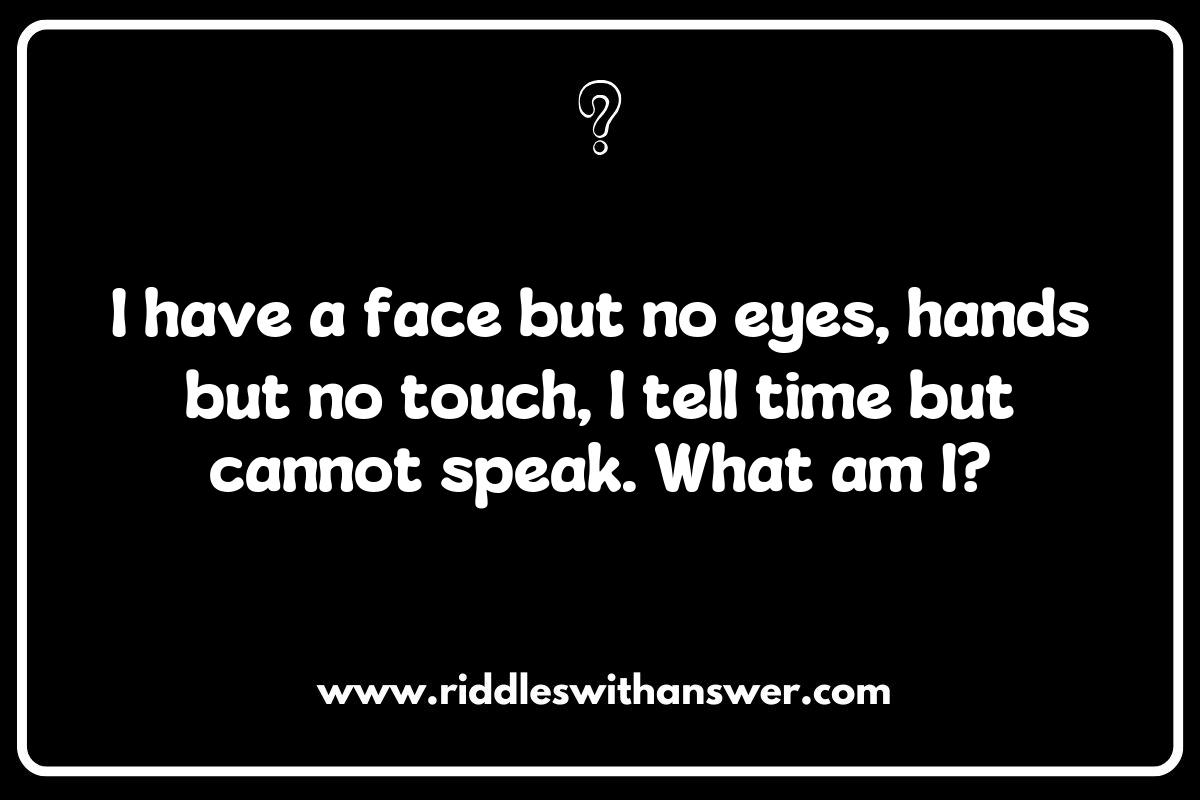
Riddle: I have a face but no eyes, hands but no touch, I tell time but cannot speak. What am I?
Answer: A clock.
Riddle: I can be cracked, made, told, and played. What am I?
Answer: A joke.
Riddle: I have keys but open no locks; I have space but no room; I have a face but no features. What am I?
Answer: A keyboard.
Riddle: The more you take, the more you leave behind. What am I?
Answer: Footsteps.
Riddle: I speak without a mouth and hear without ears. I have no body, but I come alive with the wind. What am I?
Answer: An echo.
Riddle: I fly without wings, I cry without eyes. Whenever I go, darkness flies. What am I?
Answer: A cloud.
Riddle: I am taken from a mine, and shut up in a wooden case, from which I am never released. What am I?
Answer: Pencil lead.
Riddle: I can travel around the world while staying in a corner. What am I?
Answer: A stamp.
Riddle: I am always hungry, I must always be fed. The finger I touch, will soon turn red. What am I?
Answer: Fire.
Riddle: I can be long or short; I can be grown or bought; I can be painted or bare; I can be round or square. What am I?
Answer: A nail.
Riddle: I have towns but no houses, lakes but no water, and forests but no trees. What am I?
Answer: A map.
Riddle: I go in hard, come out soft, and am never the same. What am I?
Answer: Chewing gum.
Riddle: I am not alive, but I can grow; I don’t have lungs, but I need air. What am I?
Answer: Fire.
Riddle: I can be broken without being held, and I am often heard but seldom seen. What am I?
Answer: A promise.
Riddle: I have a tail and a head, but no body. What am I?
Answer: A coin.
See Also – Explore 150 Top Werewolf Riddles to Challenge Your Mind with Answers
Exploring the Structure and Mechanics of Traditional Sphinx Riddles
Exploring the structure and mechanics of traditional Sphinx riddles unveils a fascinating blend of language and logic. These ancient puzzles challenge our wit through clever wordplay and layered meanings, inviting us to decode their mysteries. Each riddle serves as a bridge between cultures, showcasing humanity’s timeless love for storytelling and…
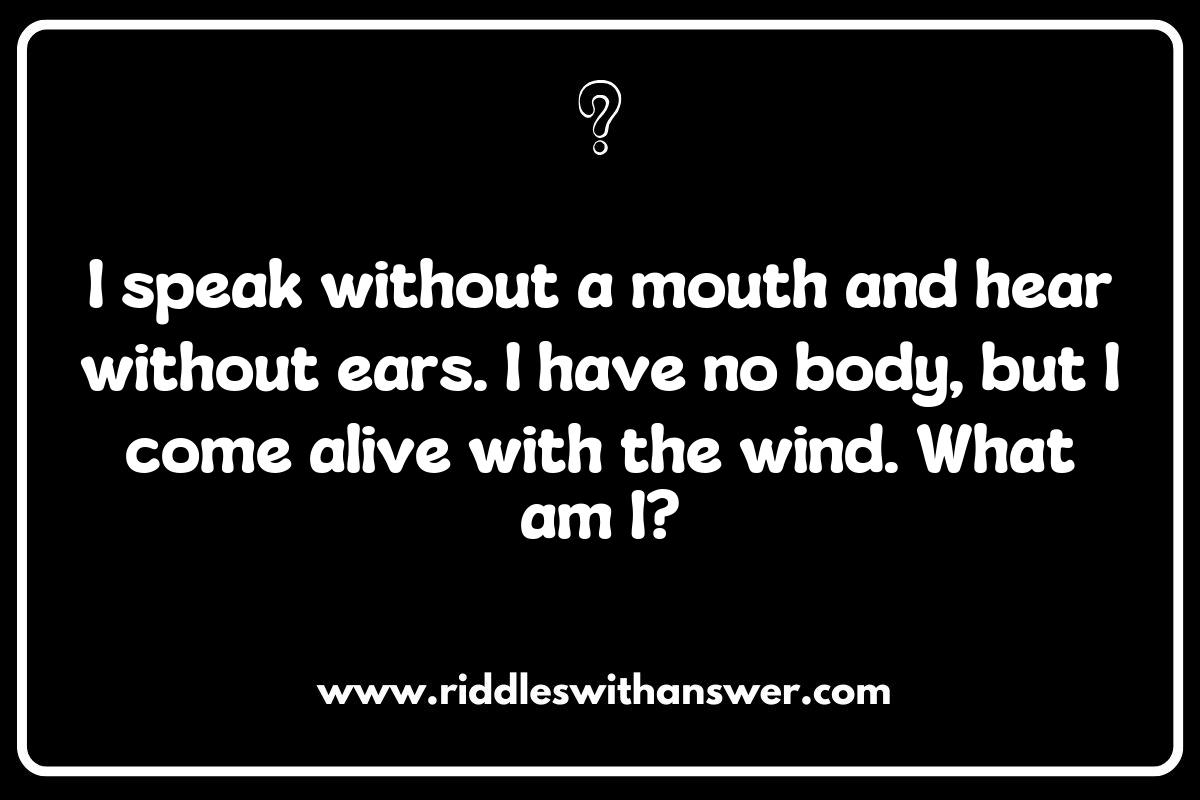
Riddle: I speak without a mouth and hear without ears. I have no body, but I come alive with the wind. What am I?
Answer: An echo.
Riddle: I can fly without wings. I can cry without eyes. Whenever I go, darkness flies. What am I?
Answer: A cloud.
Riddle: The more you take, the more you leave behind. What am I?
Answer: Footsteps.
Riddle: I have keys but open no locks. I have space but no room. You can enter, but you can’t go outside. What am I?
Answer: A keyboard.
Riddle: I can be cracked, made, told, and played. What am I?
Answer: A joke.
Riddle: I have a heart that doesn’t beat, a home but no door, and I can be broken but never touched. What am I?
Answer: An artichoke.
Riddle: I go in hard, come out soft, and am never the same. What am I?
Answer: Chewing gum.
Riddle: I am taken from a mine and shut up in a wooden case, from which I am never released. What am I?
Answer: Pencil lead.
Riddle: I have rivers with no water, forests with no trees, and mountains with no stone. What am I?
Answer: A map.
Riddle: I can’t be seen, can’t be felt, can’t be heard, and can’t be smelt. I lie behind stars and under hills, and empty holes I fill. What am I?
Answer: Darkness.
Riddle: I am always hungry, I must always be fed. The finger I touch will soon turn red. What am I?
Answer: Fire.
Riddle: I am not alive, but I can grow; I don’t have lungs, but I need air. What am I?
Answer: A fire.
Riddle: I have no life, but I can die. What am I?
Answer: A battery.
Riddle: I can be long, short, grown, or bought, and I can be painted, or left to rot. What am I?
Answer: A nail.
Riddle: I am full of holes, but I still hold water. What am I?
Answer: A sponge.
See Also – Explore 150 Enigmatic Pegasus Riddles with Answers
Famous Sphinx Riddles: Analyzing the Most Iconic Examples
Famous Sphinx riddles captivate us with their blend of mystery and intellect. From the ancient Greek Sphinx’s riddle about the stages of human life to modern interpretations, these iconic puzzles challenge our reasoning and spark curiosity. Analyzing these riddles reveals not just their cleverness, but also the timeless human quest…
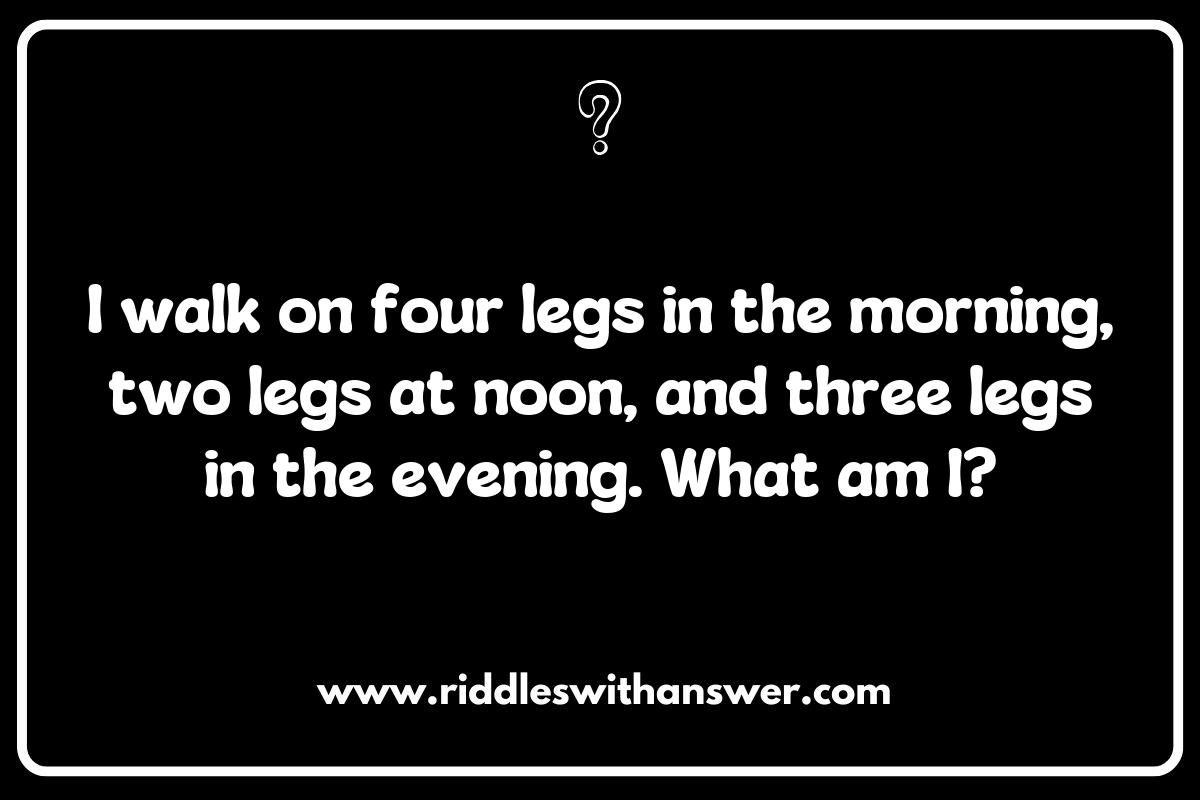
Riddle: I walk on four legs in the morning, two legs at noon, and three legs in the evening. What am I?
Answer: A human. (Crawling as a baby, walking as an adult, and using a cane in old age.)
Riddle: What has keys but can’t open locks?
Answer: A piano.
Riddle: I speak without a mouth and hear without ears. I have no body, but I come alive with the wind. What am I?
Answer: An echo.
Riddle: The more you take, the more you leave behind. What am I?
Answer: Footsteps.
Riddle: I can be cracked, made, told, and played. What am I?
Answer: A joke.
Riddle: What has cities, but no houses; forests, but no trees; and rivers, but no water?
Answer: A map.
Riddle: What is so fragile that saying its name breaks it?
Answer: Silence.
Riddle: I have branches, but no fruit, trunk, or leaves. What am I?
Answer: A bank.
Riddle: What can travel around the world while staying in a corner?
Answer: A stamp.
Riddle: I am taken from a mine, and shut up in a wooden case, from which I am never released. What am I?
Answer: Pencil lead.
Riddle: What is full of holes but still holds water?
Answer: A sponge.
Riddle: I can fly without wings. I can cry without eyes. Wherever I go, darkness flies. What am I?
Answer: A cloud.
Riddle: What has a heart that doesn’t beat?
Answer: An artichoke.
Riddle: I am not alive, but I can grow; I don’t have lungs, but I need air; I don’t have a mouth, but water kills me. What am I?
Answer: Fire.
Riddle: What gets wetter as it dries?
Answer: A towel.
See Also – Explore 150 Challenging Centaur Riddles to Spark Your Imagination and Test Your Wit
The Role of Sphinx Riddles in Literature and Storytelling
Sphinx riddles, steeped in mystery and challenge, have captivated audiences in literature and storytelling for centuries. These enigmatic puzzles serve not only as tests of wisdom, like Oedipus faced, but also as powerful metaphors for life’s complexities. They invite readers to ponder deeper truths, enriching narratives with layers of meaning…
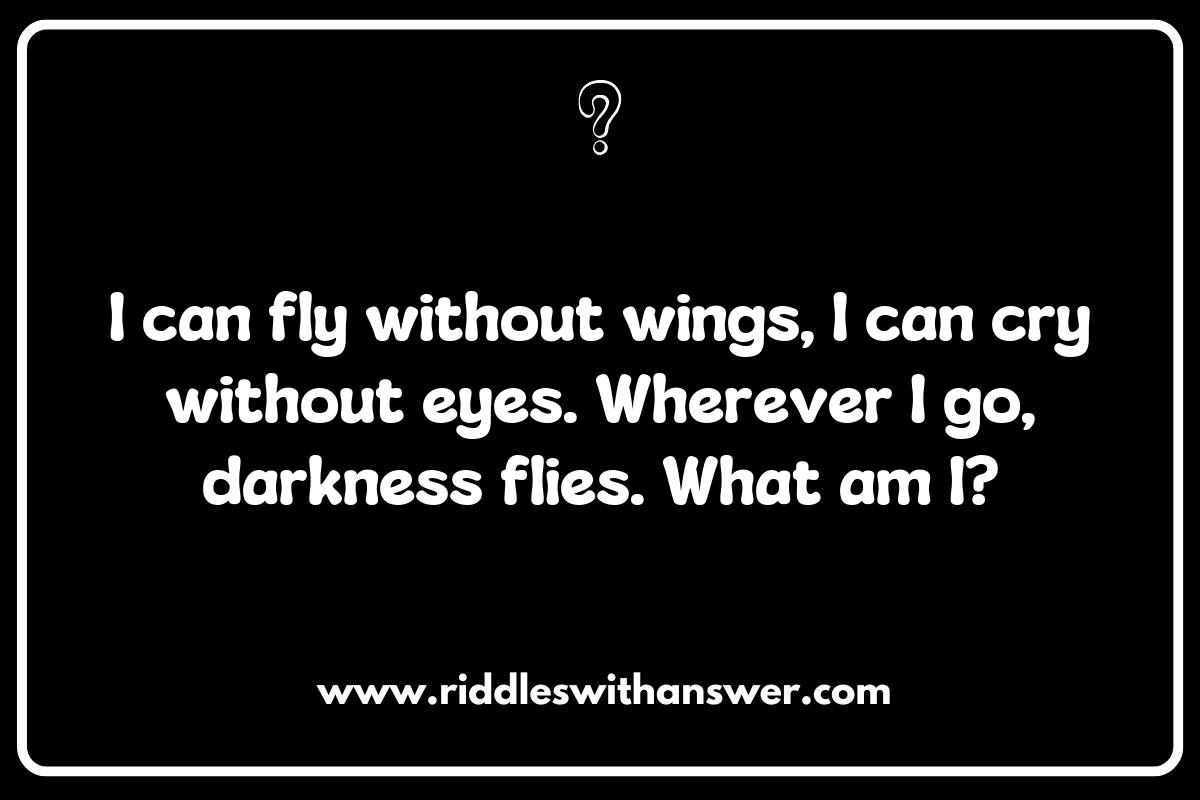
Riddle: I speak without a mouth and hear without ears. I have no body, but I come alive with the wind. What am I?
Answer: An echo.
Riddle: I can fly without wings, I can cry without eyes. Wherever I go, darkness flies. What am I?
Answer: A cloud.
Riddle: I have keys but open no locks. I have space but no room. You can enter, but you can’t go inside. What am I?
Answer: A keyboard.
Riddle: I am not alive, but I can grow; I don’t have lungs, but I need air. What am I?
Answer: Fire.
Riddle: The more you take, the more you leave behind. What am I?
Answer: Footsteps.
Riddle: I can be cracked, made, told, and played. What am I?
Answer: A joke.
Riddle: I have cities, but no houses; I have mountains, but no trees; I have water, but no fish. What am I?
Answer: A map.
Riddle: I can travel around the world while staying in a corner. What am I?
Answer: A stamp.
Riddle: I am taken from a mine and shut up in a wooden case, from which I am never released. What am I?
Answer: Pencil lead.
Riddle: I can be long or short; I can be grown or bought; I can be painted or bare; I can be round or square. What am I?
Answer: A nail.
Riddle: I have a heart that doesn’t beat, a home but no house, and I can take you anywhere without moving an inch. What am I?
Answer: A book.
Riddle: I go in hard, come out soft, and am never the same. What am I?
Answer: Chewing gum.
Riddle: I am always hungry, I must always be fed. The finger I touch, will soon turn red. What am I?
Answer: Fire.
Riddle: You see me once in June, twice in November, but not at all in May. What am I?
Answer: The letter “e.”
Riddle: I have a neck but no head, two arms but no hands. What am I?
Answer: A shirt.
See Also – Explore 150 Engaging Mermaid Riddles with Answers for Endless Fun
How Sphinx Riddles Challenge the Mind: Cognitive Benefits
Sphinx riddles are more than mere puzzles; they are gateways to cognitive growth. By challenging our problem-solving skills and promoting lateral thinking, these enigmatic queries sharpen our mental acuity. Engaging with such riddles enhances memory, boosts creativity, and fosters critical thinking, making them a delightful workout for the mind.
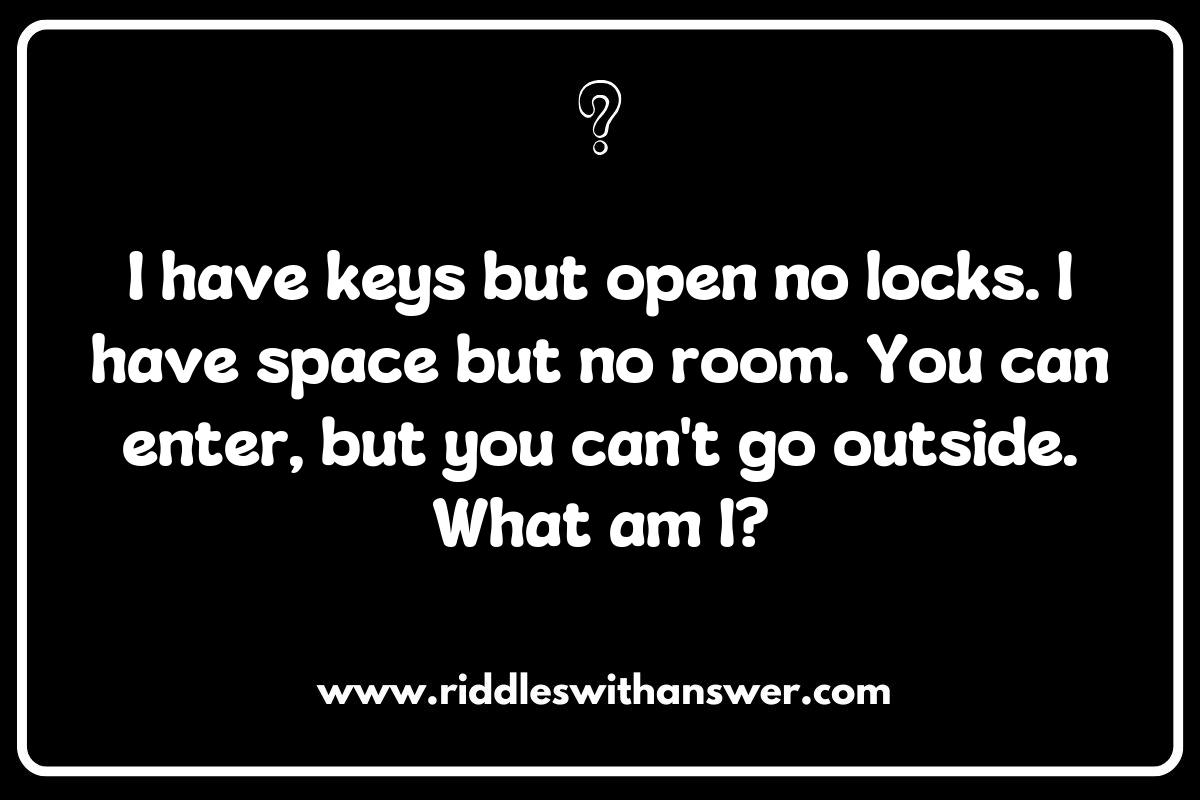
Riddle: I speak without a mouth and hear without ears. I have no body, but I come alive with the wind. What am I?
Answer: An echo.
Riddle: I have keys but open no locks. I have space but no room. You can enter, but you can’t go outside. What am I?
Answer: A keyboard.
Riddle: The more you take, the more you leave behind. What am I?
Answer: Footsteps.
Riddle: I can be cracked, made, told, and played. What am I?
Answer: A joke.
Riddle: I fly without wings, I cry without eyes. Whenever I go, darkness flies. What am I?
Answer: A cloud.
Riddle: I am not alive, but I can grow; I don’t have lungs, but I need air; I don’t have a mouth, but water kills me. What am I?
Answer: Fire.
Riddle: What begins with T, ends with T, and has T in it?
Answer: A teapot.
Riddle: I can travel around the world while staying in a corner. What am I?
Answer: A stamp.
Riddle: I have branches, but no fruit, trunk, or leaves. What am I?
Answer: A bank.
Riddle: What has many teeth but cannot bite?
Answer: A comb.
Riddle: I am always hungry, I must always be fed. The finger I touch, will soon turn red. What am I?
Answer: Fire.
Riddle: I can be long, I can be short; I can be grown, I can be bought; I can be painted, or I can be plain; I can be round, or I can be square. What am I?
Answer: Hair.
Riddle: What has to be broken before you can use it?
Answer: An egg.
Riddle: I have a heart that doesn’t beat. What am I?
Answer: An artichoke.
Riddle: What comes once in a minute, twice in a moment, but never in a thousand years?
Answer: The letter ‘M’.
See Also – Explore 150 Challenging Griffin Riddles with Answers for Puzzle Enthusiasts
Creating Your Own Sphinx Riddles: Tips and Techniques
Creating your own Sphinx riddles can be a fun and challenging endeavor! Start by choosing a familiar theme, then think of clever wordplay or double meanings. Keep your questions concise yet intriguing, encouraging creative thinking. Lastly, test your riddles on friends; their reactions can help refine your craft!
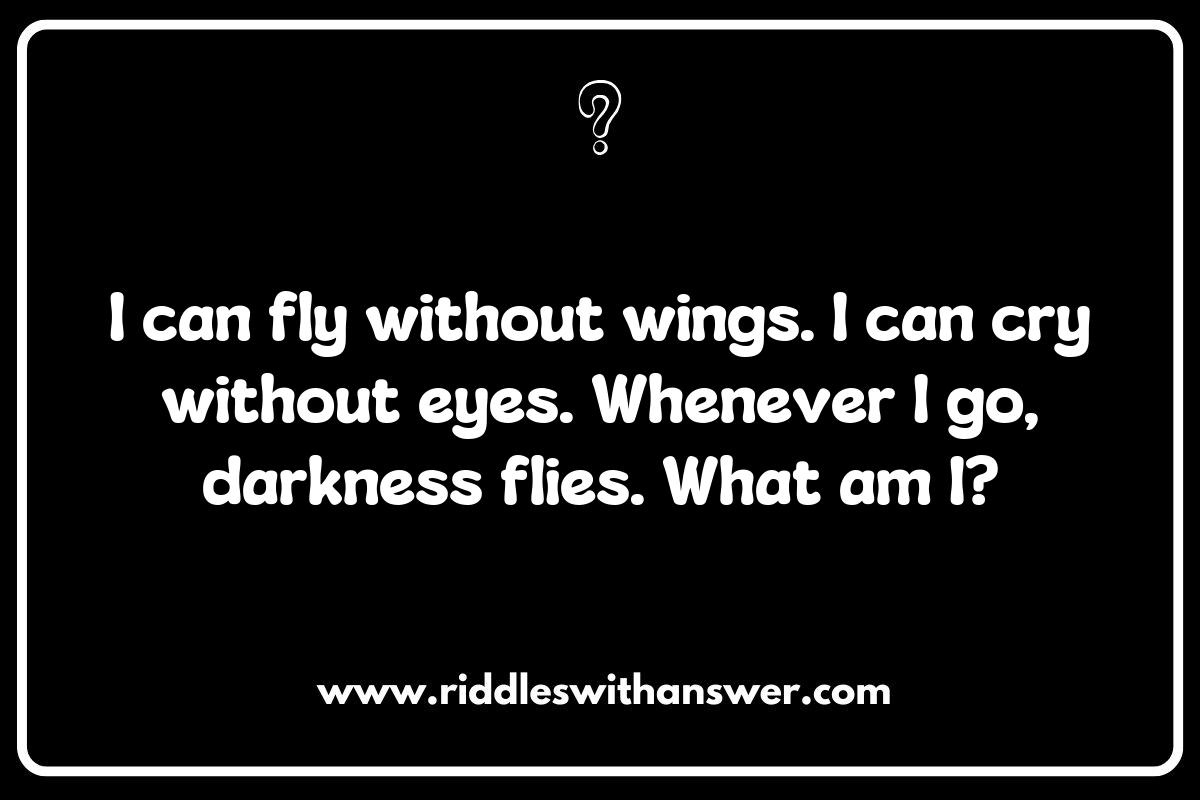
Riddle: I speak without a mouth and hear without ears. I have no body, but I come alive with the wind. What am I?
Answer: An echo.
Riddle: I can fly without wings. I can cry without eyes. Whenever I go, darkness flies. What am I?
Answer: A cloud.
Riddle: The more you take, the more you leave behind. What am I?
Answer: Footsteps.
Riddle: I have keys but open no locks. I have space but no room. You can enter, but you can’t go outside. What am I?
Answer: A keyboard.
Riddle: I have rivers without water, forests without trees, and cities without buildings. What am I?
Answer: A map.
Riddle: I can be cracked, made, told, and played. What am I?
Answer: A joke.
Riddle: I am not alive, but I can grow. I don’t have lungs, but I need air. What am I?
Answer: Fire.
Riddle: I am taken from a mine and shut up in a wooden case, from which I am never released. What am I?
Answer: A pencil lead.
Riddle: I am always hungry, I must always be fed. The finger I touch will soon turn red. What am I?
Answer: Fire.
Riddle: I can be long or short; I can be grown or bought; I can be painted or left bare. What am I?
Answer: A nail.
Riddle: I have a heart that doesn’t beat, a home but no family, and I can be cracked but never broken. What am I?
Answer: An artichoke.
Riddle: I can travel around the world while staying in a corner. What am I?
Answer: A stamp.
Riddle: I can be found in the sea, but I’m not a fish. I can be used in games, but I’m not a player. What am I?
Answer: A shell.
Riddle: I am full of holes, but I can still hold water. What am I?
Answer: A sponge.
Riddle: I go in hard, come out soft, and am never the same. What am I?
Answer: Chewing gum.
See Also – Explore 150 Enchanting Phoenix Riddles with Answers
Sphinx Riddles in Modern Pop Culture: Influence and Adaptations
Sphinx riddles have permeated modern pop culture, inspiring everything from movies to video games. Their enigmatic charm captivates audiences, prompting adaptations that blend ancient mystery with contemporary storytelling. Think of the riddle in “The Hobbit” or puzzle-solving elements in games like “Zelda,” where the timeless allure of riddles continues to…
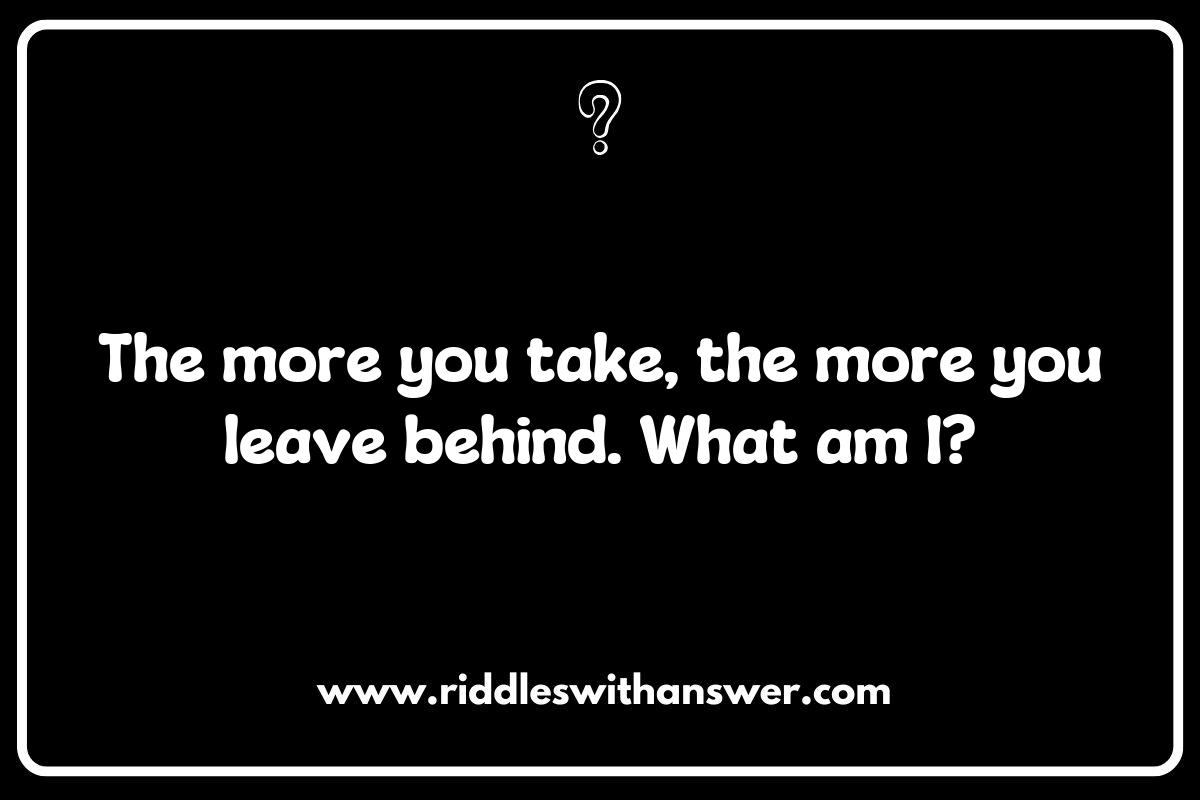
Riddle: I speak without a mouth and hear without ears. I have no body, but I come alive with the wind. What am I?
Answer: An echo.
Riddle: I can fly without wings. I can cry without eyes. Whenever I go, darkness flies. What am I?
Answer: A cloud.
Riddle: The more you take, the more you leave behind. What am I?
Answer: Footsteps.
Riddle: I have keys but open no locks. I have space but no room. You can enter but not go outside. What am I?
Answer: A keyboard.
Riddle: What has many teeth but cannot bite?
Answer: A comb.
Riddle: I can be cracked, made, told, and played. What am I?
Answer: A joke.
Riddle: I run but never walk, have a bed but never sleep. What am I?
Answer: A river.
Riddle: I am not alive, but I can grow; I don’t have lungs, but I need air. What am I?
Answer: Fire.
Riddle: What begins with T, ends with T, and has T in it?
Answer: A teapot.
Riddle: I am always hungry, I must always be fed. The finger I touch, will soon turn red. What am I?
Answer: Fire.
Riddle: I can be long or short; I can be grown or bought; I can be painted or left bare. What am I?
Answer: A nail.
Riddle: I have a heart that doesn’t beat, a home but no doors, and I can be cracked but never broken. What am I?
Answer: An artichoke.
Riddle: I have branches but no fruit, trunk, or leaves. What am I?
Answer: A bank.
Riddle: What has one eye but can’t see?
Answer: A needle.
Riddle: I go in hard, come out soft, and am never the same. What am I?
Answer: Chewing gum.
See Also – Explore 150 Engaging Dragon Riddles to Challenge Your Mind and Discover Answers
Decoding the Symbolism Behind Sphinx Riddles and Their Meanings
Sphinx riddles, steeped in ancient mythology, are more than mere puzzles; they are gateways to profound truths. Each riddle intertwines symbolism with human experience, inviting us to confront our fears and aspirations. By deciphering these enigmatic questions, we unlock deeper meanings about our existence, challenging our intellect while revealing timeless…
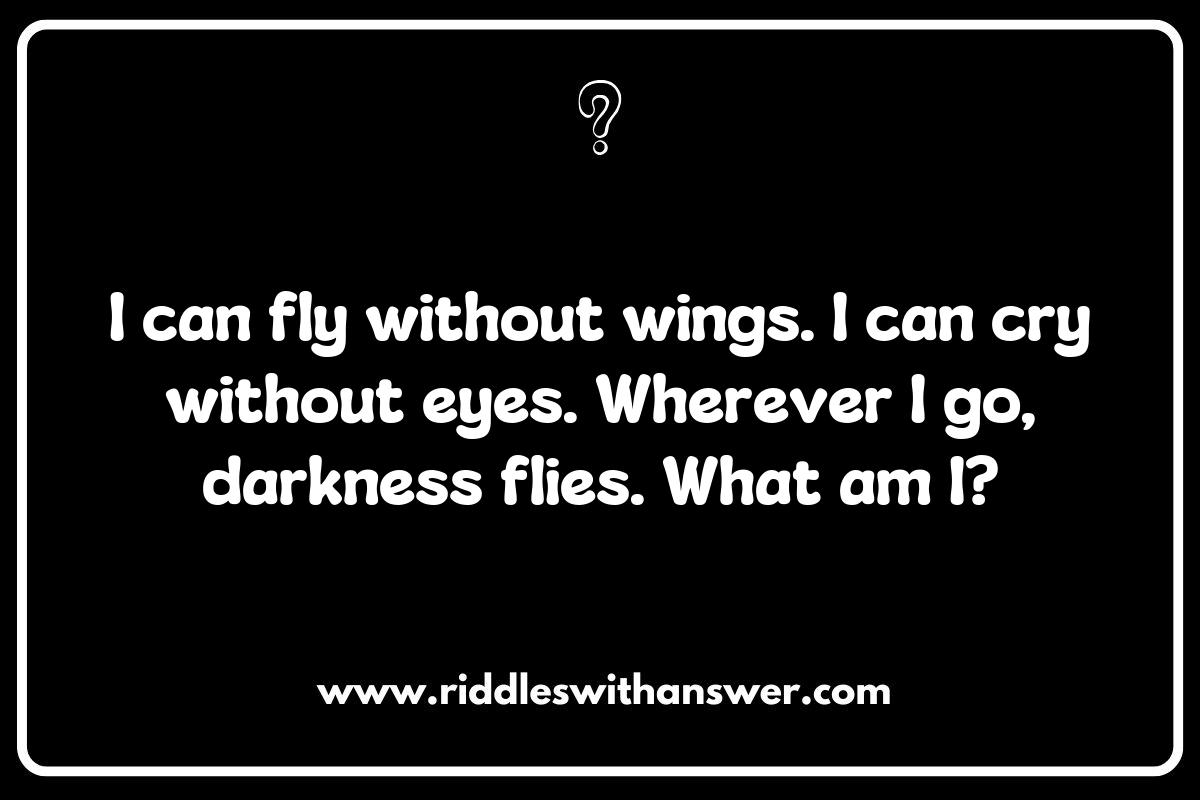
Riddle: I speak without a mouth and hear without ears. I have no body, but I come alive with the wind. What am I?
Answer: An echo.
Riddle: I can fly without wings. I can cry without eyes. Wherever I go, darkness flies. What am I?
Answer: A cloud.
Riddle: I have keys but open no locks. I have space but no room. I have a face but no eyes. What am I?
Answer: A piano.
Riddle: The more you take, the more you leave behind. What am I?
Answer: Footsteps.
Riddle: I am not alive, but I can die. I don’t have lungs, but I need air. What am I?
Answer: A fire.
Riddle: I can be cracked, made, told, and played. What am I?
Answer: A joke.
Riddle: I have rivers with no water, forests with no trees, and cities with no buildings. What am I?
Answer: A map.
Riddle: I can be long, I can be short, I can be grown, I can be bought. What am I?
Answer: Hair.
Riddle: I have teeth but cannot bite. What am I?
Answer: A comb.
Riddle: I am taken from a mine, and shut up in a wooden case, from which I am never released. What am I?
Answer: Pencil lead.
Riddle: I can be found in the sea, in the sky, and on land, but I am not alive. What am I?
Answer: A star.
Riddle: I run but never walk. I have a bed but never sleep. What am I?
Answer: A river.
Riddle: I have a heart that doesn’t beat. What am I?
Answer: An artichoke.
Riddle: I go in hard, come out soft, and am never the same. What am I?
Answer: Chewing gum.
Riddle: I can be broken without being held. What am I?
Answer: A promise.
See Also – Discover 150 Gorgon Riddles and Their Fascinating Legends
The Art of Solving Sphinx Riddles: Strategies for Success
Mastering Sphinx riddles requires a mix of creativity and logic. Start by analyzing the wording—each riddle is a puzzle wrapped in metaphor. Break it down, look for clues, and don’t hesitate to think outside the box. Collaborate with others for fresh perspectives, as sometimes, the best answers come from shared…
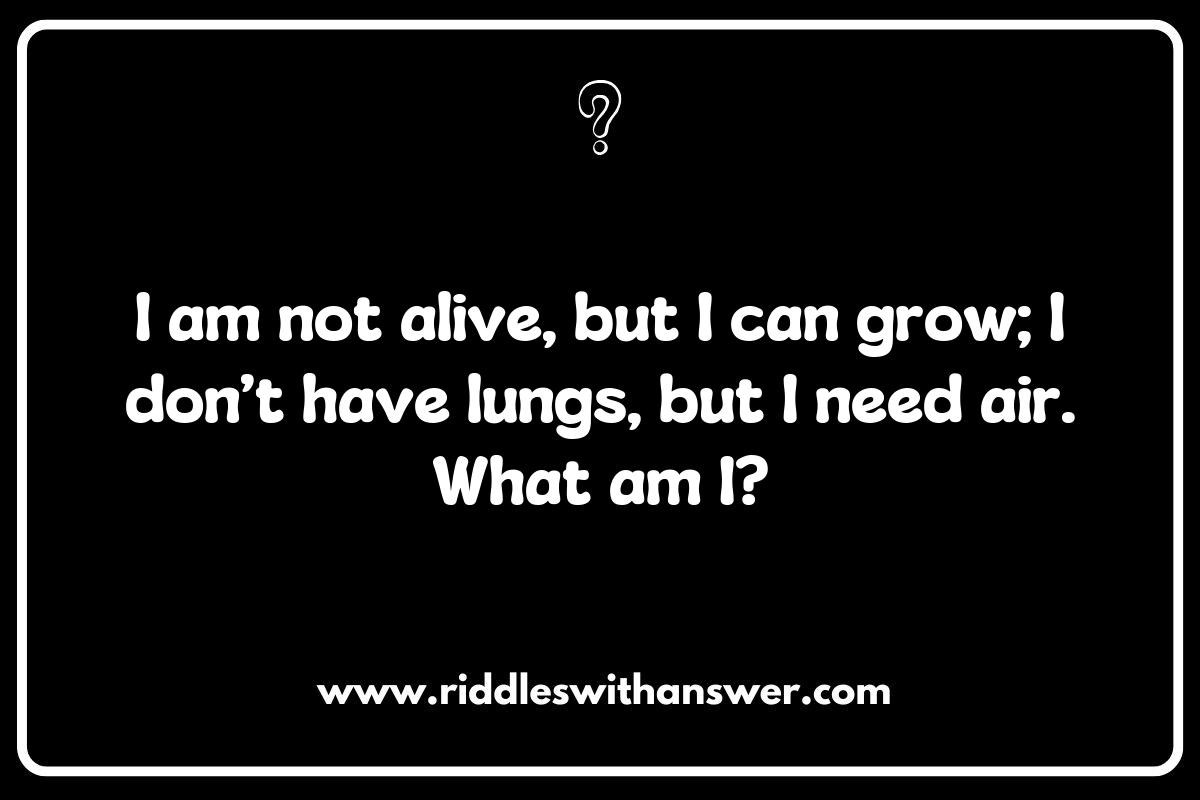
Riddle: I speak without a mouth and hear without ears. I have no body, but I come alive with the wind. What am I?
Answer: An echo.
Riddle: I can fly without wings. I can cry without eyes. Whenever I go, darkness flies. What am I?
Answer: A cloud.
Riddle: The more you take, the more you leave behind. What am I?
Answer: Footsteps.
Riddle: I am not alive, but I can grow; I don’t have lungs, but I need air. What am I?
Answer: Fire.
Riddle: I have keys but open no locks. I have space but no room. I have a face but no eyes. What am I?
Answer: A keyboard.
Riddle: I can be cracked, made, told, and played. What am I?
Answer: A joke.
Riddle: I am taken from a mine and shut up in a wooden case, from which I am never released. What am I?
Answer: Pencil lead.
Riddle: I have a heart that doesn’t beat. What am I?
Answer: An artichoke.
Riddle: I can be long or short; I can be grown or bought; I can be painted or left bare; I can be round or square. What am I?
Answer: A nail.
Riddle: I go in hard, come out soft, and am never the same. What am I?
Answer: Chewing gum.
Riddle: I have branches, but no fruit, trunk, or leaves. What am I?
Answer: A bank.
Riddle: I can be found in the ocean, but I’m not a fish; I’m a place where you might find a dish. What am I?
Answer: A shell.
Riddle: I am full of holes, but I still hold water. What am I?
Answer: A sponge.
Riddle: I have a neck but no head, and wear a cap. What am I?
Answer: A bottle.
Riddle: I can sizzle like bacon, I am made with an egg, I have plenty of backbone, but lack a good leg. What am I?
Answer: A snake.






